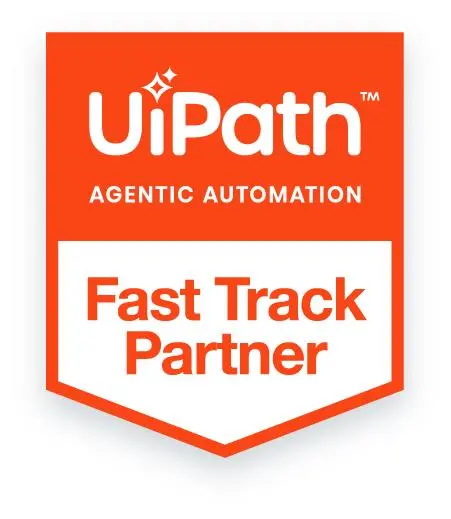
Key Takeaways
- UiPath has matured into an APA-ready platform, with tools for perception, planning, and action.
- Agents are not just bots; they are context-aware decision-makers with goal-oriented behavior.
- You can simulate multi-agent ecosystems using queues, Data Service, and modular workflows.
- Designing for agentic behavior requires a shift from task automation to goal-based planning.
- Start small, track context, and build memory-first bots to prepare for full-scale APA deployment.
Enterprises globally are expanding automation ambitions beyond robotic process automation (RPA) to more intelligent, self-governing systems. This is where Agentic Process Automation (APA) comes in. APA represents a leap from rule-based automation to autonomous, context-aware agents capable of goal-based reasoning.
While UiPath is traditionally seen as an RPA vendor, it now offers architectural capabilities that can support API automation (APA). However, this transformative potential is often underutilized because most developers and enterprise leaders don’t realize that UiPath can do more than repeat tasks—it can help build intelligent agents that act, learn, and evolve.
This blog explores the implementation of APA using UiPath, providing unique insights and frameworks that are not widely shared elsewhere.
Also read: What’s New in UiPath 2025: AI Center, Studio Web, and Automation Cloud?
What Is Agentic Process Automation (APA)?
Agentic Process Automation refers to automation systems driven by autonomous agents—entities capable of making decisions, planning, and adapting without needing step-by-step human orchestration. Unlike conventional bots, which follow predefined scripts, agentic systems:
- Perceive the environment (inputs, data streams, signals)
- Plan goals based on context and intent
- Act autonomously using system interfaces or APIs
- Collaborate with other agents or humans.
In essence, APA is a form of decentralized intelligent automation, where agents are semi-independent workers that learn and adapt with every iteration of the process.
Example: An agent in accounts payable can autonomously decide to request missing documents from a vendor, verify them with AI-based OCR, and escalate discrepancies based on confidence scores, all without human input.
Why UiPath Is Uniquely Positioned for APA?
UiPath has quietly evolved into a hybrid intelligent automation platform with several capabilities aligned with APA. Here are some lesser-known features that enable agentic workflows:

- Persistence: Through long-running workflows, agents can sleep and wake up based on triggers, giving them state retention capabilities.
- AI Fabric/AI Center: Supports deployment of ML models that agents can call to make decisions based on predictions.
- Triggers and Events: Bots can now be woken by file changes, emails, or API signals, simulating event-driven autonomy.
- Data Service: A central place for storing agent context, shared memory, or goal-state.
- Action Center: Allows escalation and exception handling in a human-in-the-loop format.
- Process Mining and Task Mining: These tools act as the eyes of your agents, helping them evolve through observation.
Underrated Insight: You can emulate decision trees inside workflows using a combination of nested workflows, decision activities, and dynamic arguments, paving the way for goal-oriented execution.
UiPath Components in an APA Architecture
Let’s map traditional APA architecture needs with UiPath components:
| APA Capability | UiPath Component | Role in Agent Design |
| Goal-based Reasoning | Custom Workflows + AI Center | Plans and decides on actions |
| Context Management | Data Service | Acts as the agent’s memory |
| Autonomous Execution | Robots (Unattended) | Takes actions on behalf of the agent |
| Triggering Intelligence | Triggers + Queues | Event-driven control flow |
| Learning Feedback Loop | AI Center + Insights | Adaptive, evolving behavior |
| Collaboration & Chaining | Queues + APIs | Agent-to-agent handoffs |
This modular design enables UiPath to replicate many agent-based design patterns observed in AI research and robotics.
Beyond RPA: What Most Don’t Know About UiPath in Agentic Contexts
While UiPath is best known for automating tasks, its true power lies in its composability. Here are several design patterns to unlock agentic capabilities:
- Bots as Personas: Instead of building bots for tasks, make them domain personas, such as “Vendor Compliance Agent” or “Quote Analyzer Agent”.
- Persistent Context with Data Service: Agents store their operational context in a shared memory space, enabling them to make decisions that depend on past interactions.
- Dynamic Triggers and Feedback: Agents listen for real-world events (e.g., invoice received) and self-initiate workflows.
- Decision Delegation via Queues: One bot completes its goal and adds a transaction item that triggers another, enabling agent chains.
Advanced Pattern: Use orchestrator assets as temporary goals. Agents read their goal from an asset, execute accordingly, and then update their state in another.
Step-by-Step APA Implementation Framework Using UiPath
Implementing Agentic Process Automation (APA) with UiPath requires a structured, modular approach, where each step builds toward intelligent, self-directed agents that adapt, learn, and collaborate across enterprise workflows. Below is a step-by-step framework to guide this transformation.

Step 1: Design Agent Personas
Start by identifying processes where autonomy would bring significant value. Break these into domain-specific agent roles.
Step 2: Define Agent Goals and Context
Use UiPath Data Service to store context, such as historical data, process state, or document metadata.
Step 3: Implement Event Listeners
Set up triggers to monitor for incoming events—emails, database updates, and new files.
Step 4: Build Adaptive Workflows
Design workflows that adapt based on argument values, Orchestrator assets, or past context. Incorporate AI predictions.
Step 5: Orchestrate Multi-Agent Coordination
Use queues to create a relay system, where one agent’s outcome becomes the input for the next agent.
Step 6: Human Escalation Layer
Use Action Center to allow agents to escalate cases they cannot resolve autonomously.
Step 7: Feedback and Learning
Use logs and UiPath Insights to track errors and improvement opportunities. Re-train models in the AI Center based on performance.
How to Design a Multi-Agent System in UiPath?
A Multi-Agent System (MAS) consists of multiple agents that work in coordination with one another. Here’s how to simulate this in UiPath:
- Central Controller: Use Orchestrator to schedule agent jobs.
- Modular Agents: Each bot represents a persona (e.g., Compliance Checker, Approval Verifier).
- Shared Blackboards: Store shared state or triggers in Data Service or an external DB.
- Message Passing: Use queues or REST APIs to simulate agent-to-agent messaging.
- Distributed Responsibility: Let each agent handle one part of a complex workflow autonomously.
Example:
- Agent A checks vendor KYC documents.
- If all checks pass, it drops a signal into Queue B.
- Agent B, listening to Queue B, proceeds to onboarding and creates an ERP entry.
Real-World Enterprise Use Case: Dynamic Invoice Fraud Detection
Problem
Traditional AP fraud detection relies on fixed rules and thresholds, which fraudsters can exploit.
APA Solution with UiPath
- Perception Agent: Uses Document Understanding and AI Center LLM model to extract and understand invoice data.
- Planning Agent: Evaluates vendor behavior patterns and risk scores using custom ML.
- Execution Agent: Based on the result, either books the invoice in ERP or sends it to the Action Center for review.
Outcome
- Reduced fraud detection time from 3 hours to 15 minutes.
- Agent autonomy score improved by 60% over 6 months.
- The agent now adapts to emerging fraud patterns based on retraining.
Implementation Challenges and Workarounds
| Challenge | Workaround |
| Stateless Bots | Use Orchestrator Queues + Data Service for state emulation |
| Lack of native agent chaining | Use custom APIs or queues for coordination |
| Long wait conditions | Use long-running workflows + persistence points |
| Training data for AI models | Use UiPath Task Mining + synthetic data generation |
Metrics That Matter in APA Projects
Traditional bot KPIs can’t measure APA success. Instead, track:
- Autonomy Rate: % of cases resolved without human input
- Escalation Ratio: % of total cases handed over to humans
- Context Utilization Rate: How often the bot uses historical memory
- Goal Completion Time: How quickly agents achieve set goals
- Learning Impact: Improvement in agent performance post model updates
Track these using UiPath Insights or link UiPath logs to a custom BI dashboard.
The Future of APA with UiPath + AI Agents
UiPath’s roadmap hints at even deeper support for APA:
- Natural Language Agents: Bots that respond to and plan based on user prompts.
- Autopilot Mode: Learning from humans to replicate complex task flows.
- Composable Agent Architectures: Templates to deploy agent chains quickly.
- LLM-Driven Dynamic Execution: No longer needing static flows; agents will decide actions on the fly using prompt-chaining.
Tip: Start logging all decision points and outcomes today. Even if you aren’t using APA yet, this data becomes a goldmine for future agent learning.
The Final Verdict
With UiPath as your foundation, Agentic Process Automation is no longer a future goal — it’s an architectural possibility waiting to be realized.
The convergence of RPA, AI, and event-driven architectures within UiPath enables enterprises to move beyond static task automation into a world where digital agents think, learn, and act with autonomy. By leveraging underutilized features such as Data Service for memory, AI Center for decision-making, and long-running workflows for persistence, organizations can begin constructing agentic ecosystems today, not in some distant, idealized future.
The shift to APA requires a mindset change—from building bots to engineering goal-driven entities that continuously adapt and evolve. It also demands better design discipline, clearer agent roles, and a commitment to tracking feedback loops and agent performance metrics.








